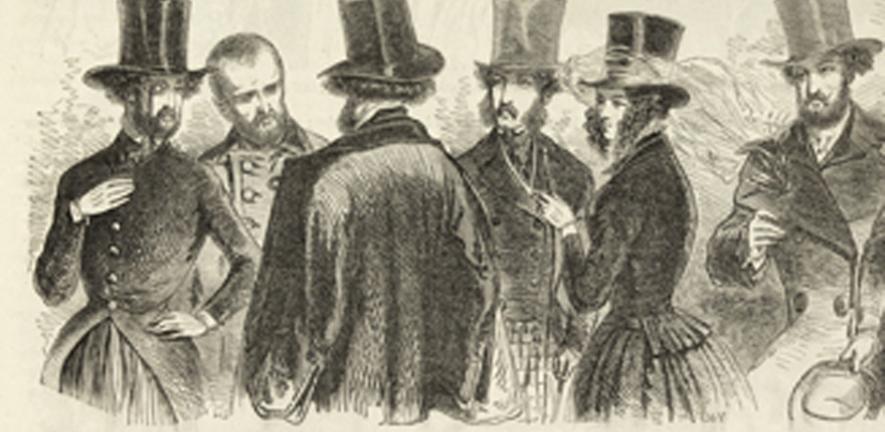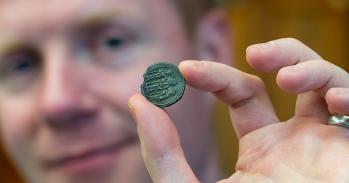
Miranda Gill traces shifting 19th-century perceptions of eccentricity, from its association with the intoxicating lure of modernity and fashion to the murky underworld of circus freaks and half-mad visionaries.
Miranda Gill traces shifting 19th-century perceptions of eccentricity, from its association with the intoxicating lure of modernity and fashion to the murky underworld of circus freaks and half-mad visionaries.
Eccentricity is, instead, a historically relative and context-dependent term, which must be situated within the broader histories of individualism and deviance.
Since the 18th century, English culture has been associated (both by the English themselves and by continental observers) with unusual tolerance towards unconventional and peculiar individuals. Even today, eccentricity is often seen as an obligatory component of the English national character. The eccentric is typically portrayed as a harmless and amiable figure, someone who provides others with a pleasant diversion from the tedium of everyday life.
But how historically representative are these received ideas of eccentricity? This question has formed the basis of my research and the subject of my recent book, which seeks to investigate more sceptically the cultural and ideological functions of eccentricity.
My research starts from two sets of assumptions: first, that eccentricity is neither timeless nor universal; second, that it is by no means always harmless and absurd. Eccentricity is, instead, a historically relative and context-dependent term, which must be situated within the broader histories of individualism and deviance. Eccentricity often elicited violent and conflicting responses, and was associated with potentially disturbing figures such as the insane, social marginals, human ‘monsters’ and the tempestuous Romantic genius. Beliefs about eccentricity varied widely across European national traditions, and were underpinned by complex assumptions about gender and class.
I chose 19th-century Paris as the focus of the study precisely because its culture was significantly different from English culture. The modern concept of eccentricity had crystallised in 18th-century England, a culture increasingly interested in poetic and psychological originality. Pre-Revolutionary French culture, by contrast, was markedly hostile to both originality and individual difference. It asserted that elegance was timeless, upheld rigid ideals of good taste and decorum, and stressed the need for social conformism. It was precisely the initial strength of French resistance to the values of eccentricity, I suggest, which make its reception after 1830 so revealing of tensions in French cultural identity.
Ambivalent emotions
Breaking with convention aroused highly ambivalent responses in 19th-century Parisian readers, writers and spectators. Eccentricity was debated in a wide range of sources, including etiquette manuals, fashion magazines, newspapers, novels, plays, political pamphlets, and scientific and psychiatric treatises. On the one hand, the scandal of ‘standing out’ evoked the aspirations of the bourgeoisie, namely its dreams of freedom, creativity and individuality. On the other, it symbolised the deepest anxieties of this class, the threat of madness, monstrosity and sin. Eccentricity was therefore simultaneously desired and feared, incorporated into and rejected from bourgeois identity.
Why were the French so ambivalent towards eccentricity? The French Revolution in 1789 inaugurated a century of unprecedented social and political instability, generating a strong desire in the French elite to create social cohesion and order. An orderly society entailed the suppression of any challenges to social norms. At the same time, however, the influence of Romanticism led to an increasing desire for individual freedom and fulfilment, whilst the bourgeoisie had strong faith in social and intellectual progress. The latter tendencies inevitably led to many norms and traditions being called into question, and 19th-century Parisian culture was at the forefront of attempts to probe the fragile boundaries between conformism and eccentricity. Three cultural fields in which this is most evident are fashion, bohemia and science.
Followers of fashion
Eccentricity in Paris of the 1830s was linked to flamboyant new fashions and the seductions of commodity culture. The values of fashion, including novelty and bizarreness, were diametrically at odds with the traditional values of French politeness and etiquette. Eccentric styles epitomised the intoxicating dangers of modernity, and were championed by a range of unconventional figures, including male and female dandies and the aristocratic figure of the lionne or lioness. The lionne rejected the fragility and hysteria associated with respectable women, and engaged instead in energetic ‘masculine’ pursuits such as horse-riding and smoking. But increasingly, such eccentricity was linked to demi-mondaines and courtesans, who, it was feared, were corrupting the morality and health of the social elite.
Bohemian culture
After Napoleon III’s coup d’état of 1851, the social position of the writer and artist became more problematic. Eccentricity was associated with the artists, social marginals and urban poor who inhabited ‘the unknown Paris’. This murky underworld fascinated bourgeois observers as much as it horrified them. Writers and journalists documented their ambivalent responses to exhibitions of human freaks in the fairground and to the half-mad visionaries of bohemian street culture. They were uneasily aware that they too failed to conform to bourgeois norms and that some eccentrics might be unrecognised geniuses.
Scientific theory
The popularisation of medical theories of national decline after 1851 led to increasing moral panic. Eccentricity was interpreted as a symptom of insanity and concealed deformity, and eccentrics were often portrayed as a dangerous social menace which psychiatrists and legislators struggled to contain. Despite this, many writers, including Gérard de Nerval, Jules-Amédée Barbey d’Aurevilly, Charles Baudelaire and Jules Vallès, championed ‘pathological’ and ‘monstrous’ forms of eccentricity. Their writing constitutes an act of symbolic resistance to a culture which defined normality, virtue and health in increasingly restrictive and unimaginative terms.
A contemporary debate
In charting the history of eccentricity, one conclusion I arrived at was that beliefs about precisely how much individuals are permitted to diverge from social norms differ considerably between cultures in response to very specific socio-historical factors. Gender appears to be central to the imagination of deviance in this period since what was deeply eccentric for women was often considered quite normal for men, and vice versa. Ultimately, the experience of ambivalence is inseparable from European modernity: eccentricity represents one compelling set of values (novelty, freedom, individuality) which clashed significantly with other, equally compelling values (stability, order, community). In many ways, this type of clash is central to debates in contemporary moral and political philosophy about the plurality of values and goods.
The interdisciplinary focus of the project continues to develop, as it traces the migration of concepts and metaphors between literature, popular culture and science. Continuing to emphasise the ways in which social and psychological categories are implicitly shaped by values and norms, my research is now focusing on a cultural history of paranoia and suspicion in French modernity.
For more information, please contact the author Dr Miranda Gill (mfg24@cam.ac.uk) at the Department of French, in the Faculty of Modern and Medieval Languages.
This work is licensed under a Creative Commons Licence. If you use this content on your site please link back to this page.





